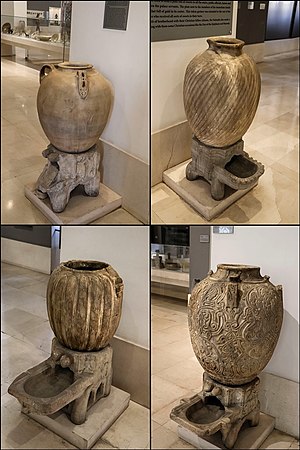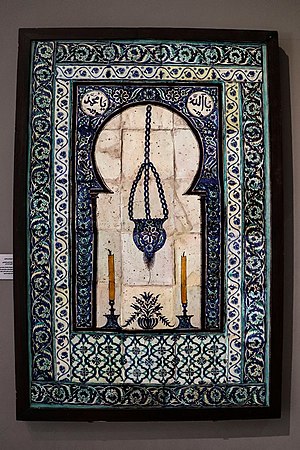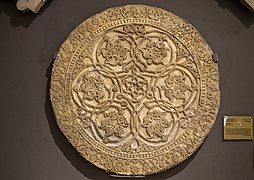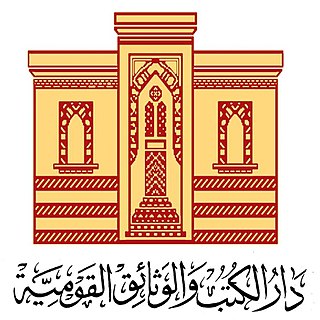
The al-Hakim Mosque, nicknamed al-Anwar, is a historic mosque in Cairo, Egypt. It is named after Al-Hakim bi-Amr Allah (985–1021), the sixth Fatimid caliph and 16th Ismaili Imam. Construction of the mosque was originally started by Caliph al-'Aziz, the son of al-Mu'izz and the father of al Hakim, in 990 AD. It was completed in 1013 by al-Hakim, which is why it is named after him.

Al-Rifa'i Mosque is located in Citadel Square, adjacent to the Cairo Citadel. Its name is derived from the Ali Abu Shubbak who is buried in the mosque. Now, it is also the royal mausoleum of Muhammad Ali's family. The building is located opposite the Mosque-Madrassa of Sultan Hassan, which dates from around 1361, and was architecturally conceived as a complement to the older structure as part of a vast campaign by the 19th century rulers of Egypt to both associate themselves with the perceived glory of earlier periods in Egypt's Islamic history and modernize the city.

Islamic Cairo, or Medieval Cairo, officially Historic Cairo, refers mostly to the areas of Cairo, Egypt, that were built from the Muslim conquest in 641 CE until the city's modern expansion in the 19th century during Khedive Ismail's rule, namely: the central parts within the old walled city, the historic cemeteries, the area around the Citadel of Cairo, parts of Bulaq, and Old Cairo which dates back to Roman times and includes major Coptic Christian monuments.

The Mosque of Ibn Tulun is located in Cairo, Egypt. It is one of the oldest mosques in Egypt as well as the whole of Africa surviving in its full original form, and is the largest mosque in Cairo in terms of land area. It is built around an open square courtyard which allows natural light to travel through. Ibn Tulun Mosque features ancient architecture styles of Egypt, its decorations being created from carved stucco and wood. This mosque is a popular tourist attraction.
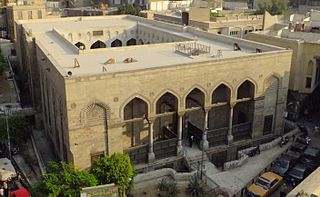
The Mosque of al-Salih Tala'i is a late Fatimid-era mosque built by the vizier Tala'i ibn Ruzzik in 1160. It is located south of Bab Zuweila, just outside the southern entrance to the old walled city of Cairo.

The Gayer-Anderson Museum is an art museum located in Cairo, Egypt. It is situated adjacent to the Mosque of Ahmad ibn Tulun in the Sayyida Zeinab neighborhood. The building takes its name from Major Robert Grenville Gayer-Anderson Pasha, who resided in the house between 1935 and 1942 with special permission from the Egyptian Government. The museum is noted for being one of examples of 17th-century domestic architecture left in Cairo, and also for its collection of furniture, carpets, curio, and other objects.

There have been many architectural styles used in Egyptian buildings over the centuries, including Ancient Egyptian architecture, Greco-Roman architecture, Islamic architecture, and modern architecture.

Old Cairo is a historic area in Cairo, Egypt, which includes the site of a Roman-era fortress, the Christian settlement of Coptic Cairo, and the Muslim-era settlements pre-dating the founding of Cairo proper in 969 AD. It is part of what is referred to as Historic Cairo, a UNESCO World Heritage Site.

The Coptic Museum is a museum in Coptic Cairo, Egypt with the largest collection of Coptic Christian artifacts in the world. It was founded by Marcus Simaika in 1908 to house Coptic antiquities. The museum traces the history of Egypt from its beginnings to the present day. It was erected on 8,000 square meter land offered by the Coptic Orthodox Church, under the guardianship of Pope Cyril V.

The al-Hussein Mosque or al-Husayn Mosque, also known as the Mosque of al-Imam al-Husayn and the Mosque of Sayyidna al-Husayn, is a mosque and mausoleum of Husayn ibn Ali, originally built in 1154, and then later reconstructed in 1874. The mosque is located in Cairo, Egypt, near the Khan El-Khalili bazaar, near-by the famous Al Azhar Mosque, in an area known as Al-Hussain. It is considered to be one of the holiest Islamic sites in Egypt. Some Shia Muslims believe that Husayn's head is buried on the grounds of the mosque where a mausoleum is located today and considered to be what is left of the Fatimid architecture in the building.

Boulaq, is a district of Cairo, in Egypt. It neighbours Downtown Cairo, Azbakeya, and the River Nile.
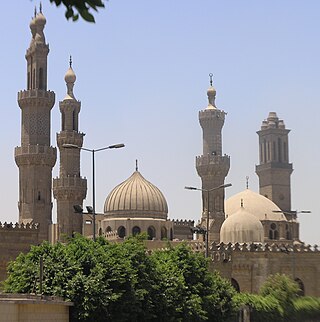
Al-Azhar Mosque, known in Egypt simply as al-Azhar, is a mosque in Cairo, Egypt in the historic Islamic core of the city. Commissioned by a as the new capital of the Fatimid Caliphate in 970, it was the first mosque established in a city that eventually earned the nickname "the City of a Thousand Minarets". Its name is usually thought to derive from az-Zahrāʾ, a title given to Fatimah, the daughter of Muhammad.

The Mosque of al-Zahir Baybars is a mosque built in Cairo, Egypt by the Mamluk Sultan al-Zahir Baybars al-Bunduqdari.

The Fatimid architecture that developed in the Fatimid Caliphate (909–1167 CE) of North Africa combined elements of eastern and western architecture, drawing on Abbasid architecture, Byzantine, Ancient Egyptian, Coptic architecture and North African traditions; it bridged early Islamic styles and the medieval architecture of the Mamluks of Egypt, introducing many innovations.
The Comité de Conservation des Monuments de l'Art Arabe was an organization established in December 1881 by Khedive Tawfiq which was responsible for the preservation of Islamic and Coptic monuments in Egypt. It was an Egyptian institution, part of the Ministry of Charitable Endowments, but is often referred to by its French title.
Max Herz (born as Herz Miksa Hungarian architect, conservator, museum director and architectural historian, active in Egypt.

Sulayman Pasha al-Khadem Mosque, also known as Sariat al-Jabal Mosque, is a historical mosque established in 1528 by Suleiman Pasha Al-Khadem, one of the Ottoman rulers of Egypt. It is located inside the Cairo Citadel at the top of Mount Mokattam, and originally erected for the use of the janissaries stationed in the northern enclosure. It is the first mosque established in Egypt in Ottoman architectural style.

Mario Rossi (1897-1961) was an Italian architect and notable contributor to 20th-century Islamic architecture.


